Explore tunisia...
Where do you want to go ?
- Tunis Carthage Airport (TUN)
- Enfidha Airport (NBE)
- Monastir Airport (MIR)
- Djerba-Zarzis Airport (DJE)
- Tozeur-Nefta Airport (TOE)
- Carthage (Kart-Hadasht)
- Dougga (Thugga)
- El Jem (Thysdrus)
- Ichkeul National Park
- Kerkouane
- Kairouan
- Sousse
- Tunis
- Bulla Regia (Royal Bulla)
- Chemtou (Simitthus)
- Elles (Megalithic Tombs)
- Haidra (Ammaedara)
- Le Kef (Sicca Veneria)
- Makthar (Mactaris)
- Neapolis
- Oudhna (Uthina)
- Pupput
- Sbeitla (Sufetula)
- Thuburbo Majus

Le Kef (Sicca Veneria)
What to see
.jpg)
- The Mosque: was in its heyday the centre of the local Aissaawiya Sufis, and it is named after Le Kef's patron saint: Sidi Bou Makhlouf.This tiny mosque is neither old nor religiously important, but is an usually successful piece of mosque architecture which two ribbed domes and the octagonal minaret can be viewed from many angles.
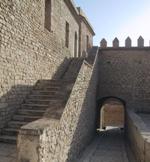
- The Kasbah: a military fortress and the most dramatic and visible sight of Le Kef dating back to 1601. Its purpose was to defence the town then it has been transformed into the cultural centre in town, lying ideally next to the famous Moasque of Sidi Bou Makhlouf and the myserious basilica.
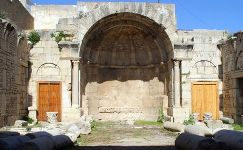
- Basilica: it was never associated with churches, it was either erected in Roman or Byzantine times, and centuries later converted into a mosque, but today it is a small-scale museum. The two main parts, are a spacious courtyard and a cruciform room. In the latter there are 23 niches, now used for displaying local antiquities.
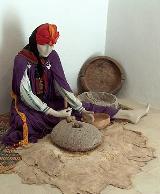
-
Museum of Arts and Popular Traditions: The house is a 17th century ‘zawia’, but could easily have been a local lord's palace.It has two domes and two courtyards, plus a number of smaller rooms. The exhibit is more a question of likings, as it deals with jewellery and handicrafts. Interesting enough, it still takes a bit of interest in the popular part of Tunisian history.
Nearby
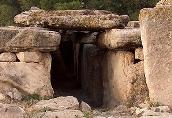
ELLES (48 Kms)
.jpg)
Makthar (Mactaris- 71 Kms)
The scenery alone makes from Makthar well worth a visit. The ancient and moden town of Makthar are situated on neighbouring hilltops separated by a road junction at a Roman triumphal arch. The setting of this fascinating archaeological site is spectacular and the museum has some particularly fine tombstones, both nero-Punic and Roman. There are baths, tamples, a small amphitheatre and remains of a vandal basilica.
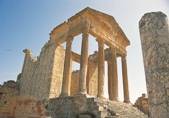
Dougga (50 Kms)
Dougga is classified by the UNESCO as a World Heritage (WH) and the best preserved Roman site in Tunisia, dramatically set in the foothills of the Atlas Mountains. It was an important town before the Romans - in the 2nd century BC it was the base of the Numidian king Massinissa, a supporter of Rome against the Carthaginians.
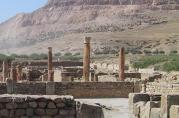
Bulla Regia "Royal Bulla" (150 Kms)
Royal Bulla is set in the hills above the Madjerda valley. This Roman site is distinguished by its Underground villas and it includes the Forum (with the capitol and the Temple of Appolo) and the Theatre.
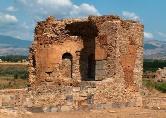
Chemtou "Simitthus" (100 Kms)
On a hillside 20 kilometres from Jendouba and famous throughout the Roman Empire for its marble.Simitthusincludes Marble quarries, The prison campsn a hilltop Altar and a Theatre.



